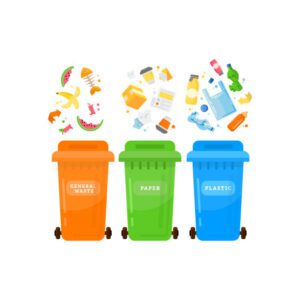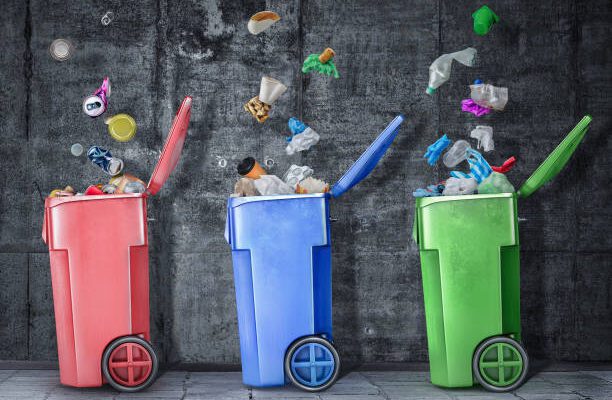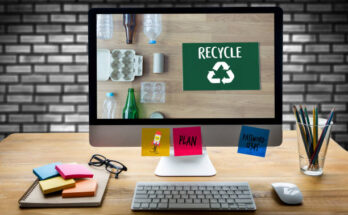There are various forms of waste, and each type requires a particular approach to management. Thus, it is crucial to comprehend how to segregate waste and how to implement it. In the waste management process, this comes first. It alludes to the procedure by which various wastes are first sorted and then collected in various ways.
Separating dry from wet trash is referred to as waste segregation, and it opens the way for other waste management ideas like composting, recycling, and incineration. Its ultimate objective is to lessen the amount of waste sent to landfills and eventually stop air, water, and land contamination.
Why Should Waste Be Segregated?
 (Photo from istock)
(Photo from istock)
Just 43 million tons (MT) of India’s annual trash production are collected. Just 11.9 MT of the collected garbage is scientifically processed, while over 31 MT is disposed of in landfills or waterways.
As a result, our landfills are overflowing with urban rubbish to the point where, in 2050, India will reportedly require a landfill the size of New Delhi, according to a joint report by Assocham and accounting company PwC. Separating garbage so that it can be handled scientifically at the source is the first and most important step in reversing this alarming projection.
-
Here are a few ways To Segregate Waste properly:
Wet/Kitchen Waste
 (Photo from istock)
(Photo from istock)
Fruit peels, leftovers, vegetable skins, uncooked meals, coffee or tea powder, and yard garbage like leaves and twigs are included in this. Keep such waste in a drum, container, or bin so that it can be turned into rich organic compost. Your composting method is up to you. Vermin composting, aerobic composting and anaerobic composting are a few examples.
Kitchen waste can also be used as a compost, hence, one can put the waste in separate basket or small pit. Which will eventually act as a compost pit and can be used in number of ways. This is also eco-friendly.
Dry waste
Pet bottles, plastic tote bags, newspapers, glass bottles, shoes, plastic cutlery, tires, cardboard, and more are examples of dry recyclable garbage.
Further sorting the recyclable rubbish can get you cash or other rewards. You can submit your dry garbage to a variety of sources to receive something in return, including internet kabadiwalas, neighbourhood scrap dealers, recycling facilities, raddiwalas, and municipal corporations. Keep a recycle bin and dispose of it once or twice a week as dry waste only makes up 30–40% of total household waste.
Sanitary Waste
Sanitary trash includes adult and baby diapers, synthetic sanitary goods, hygiene-related items, condoms, tampons, and dirty napkins. Linens, bedding, objects tainted with blood or bodily fluids, contaminated plaster casts, and other types of dressing make up medical waste.
It is necessary to burn, microwave, or autoclave medical and sanitary waste in order to prevent the spread of infections. The most effective technique to get rid of them is to wrap them in newspaper and mark them with a red dot for simple identification because not every Indian city or hamlet has the resources to manage the garbage scientifically.
E-waste
You need to be aware of three different kinds of electrical waste:
- Bulky: A refrigerator, microwave, or any other heavy object.
- Tube lights, light bulbs, toner, batteries, monitors, and screens are dangerous. anything that contains chemical elements.
- Unrisky: Cables, chargers, microwaves, and electronic devices like laptops and phones. You might follow a weekly, monthly, or yearly disposal method after gathering all the electronic garbage in a container.
You can give or trade your electronic waste at any number of public drop-off locations, online collection services, and recycling facilities, just like you can with dry waste.
Following are a few ways to Segregate Waste at Work:
In the majority of offices, recyclable waste goes in one container and wet trash goes in the other. But as in your home, waste management gets better with more segmentation.
- Here are four bins that every office should have:
- A container in the cafeteria or canteen for wet trash, such as leftover food, vegetable or fruit peels, tea bags, etc. If there is a significant amount of moist waste, an office can also practice on-site composting.
- To further sort dry waste, separate it into plastic, metal, glass, and paper. Every week, send each form of trash to recycling facilities or services.
- The office shall collect and deliver electronic trash such as CDs, pen drives, bulbs, tube lights, computer systems, electric cables, keyboards, batteries, motherboards, etc. to e-waste collection facilities.
- Bathrooms should have bins for sanitary waste, such as used pads. Some offices even have incinerators to deal with it right where it starts.
The best way to practice waste management is to create a group of people who share your interests.
 (Photo from istock)
(Photo from istock)
To your family and the neighbours in your apartment complex or neighbourhood, you should thoroughly explain the trash segregation process. Inform the residents and staff of the apartment buildings to make the procedure easier. Investing in separate storage drums for dry and wet trash is the best approach to store bulk waste. Contact the local scrap dealer to arrange for the collection of the dry waste.
We might state as a conclusion that it is imperative to separate garbage. It is essential for enhancing both health and the environment. We must not disregard it. So let’s all set aside some time each day to organize our rubbish. All parties gain from waste separation, which also makes cities more habitable and sustainable.
References:
the better india
Worried with water pollution, want to lessen its hazardous effects? What are you waiting for!, click on the link below:
How to Lessen Water Pollution




